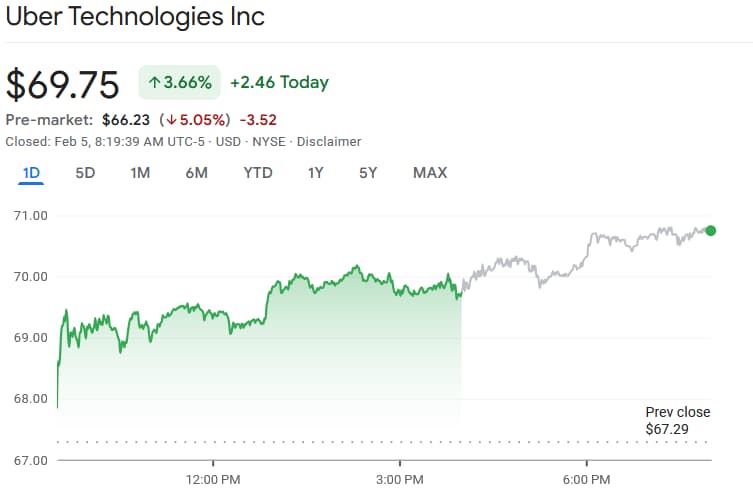Uber Technologies (NASDAQ: UBER) saw quite a lot of volatility in the last quarter of 2024.
The price of Uber stock fell from a high of $86.34 to $60.32 by the end of the year. With an increasingly competitive space in the crucial autonomous vehicle space and slowing bookings growth, investors anxiously awaited the disruptive business’s next earnings call.
On February 5, the company released its Q4 and full-year 2024 report. Following its publication, the price of Uber stock fell by 5.05%, leaving Uber shares to change hands at a price of $66.23 at press time, down from $69.75 a day prior.

With that pullback in mind, one would expect the cause to have been an earnings or revenue miss. However, neither of those things happened. In fact, the ridesharing company posted a double beat — both of those metrics beat analyst estimates.
That’s not something that happens often — let’s take a closer look at the earnings report to see why the markets might have reacted the way they did.
Uber stock dips on lower-than-expected guidance
First, let’s deal with the specifics of that double beat, in the interest of attaining a holistic overview. For the quarter ended December 31, earnings per share (EPS) came in at $3.21. This was quite a significant outperformance compared to consensus analyst estimates of just $0.50. In addition, revenues of $11.96 billion came in above the average forecast of $11.77 billion.
There are a couple of key metrics where Uber fell short of expectations, however. Management guided gross bookings of $42.75 billion at the midpoint — while analysts were expecting to see $43.5 billion.
That wasn’t the only disappointment — Uber’s operating income was estimated to come in at $1.21 billion, whereas the final tally was just $770 million. A large portion of this miss can be attributed to legal, tax, and regulatory reserve changes and settlements — which totaled $462 million for the quarter. On top of that, Uber stock is exposed to currency headwinds on account of a strong dollar, as the company operates in more than 70 countries.
Lastly, the ridesharing venture’s freight division saw a year-over-year (YoY) decrease in gross bookings in tandem with flat revenue — once all was said and done, it caused a $22 million loss in earnings.
Despite the dip, the market’s reaction appears outsized — as the positives seem to outweigh the negatives. Analysts generally see quite a bit of upside in the cards for Uber stock, and this pullback could prove to be a promising entry point for a long position.
Featured image via Shutterstock








